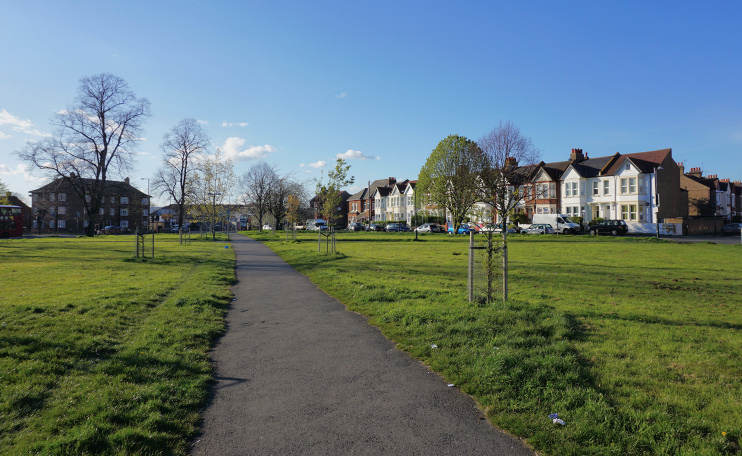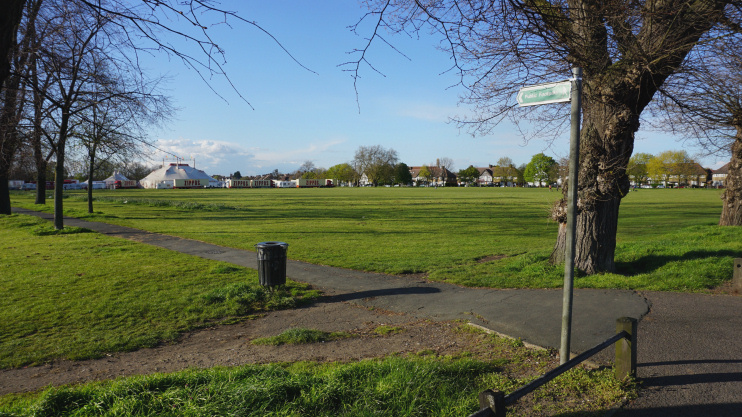Figge’s Marsh
Figge’s Marsh, Merton
A triangular open space and its neighbouring housing at the fork of London Road and Streatham Road, in north Mitcham – with several dubious stories attached

Figge’s Marsh is nine miles from London, according to its 18th-century milestone, which is rumoured to have been removed during the Second World War in case German planes landed here and realised how close they were to the city centre.
Despite suggestions by some authors that the name is a corruption of Pigs’ Marsh, it was in fact named after William Figge, who from the 1350s held Pound Farm in sergeantry to the king. Present-day Carlingford Gardens and Manship Road mark the boundary between Figge’s property and that of the medieval Biggin Farm estate. Swain’s Farm also stood near here and market gardening was carried on.
Daniel Defoe is said to have lived in a house on London Road near Figge’s Marsh around 1688, when he was serving as a Presbyterian minister in Tooting, but this whole story is somewhat suspect. Nevertheless, roads to the north-west of the locality have been given names connected with Defoe’s story of Robinson Crusoe.
In Defoe’s time, a plague pit is said to have been dug on the marsh but there is scant evidence for this (as is the case with many alleged London plague pits).
Another tall tale of Figge’s Marsh revolves around sightings of the semi-legendary Spring Heeled Jack† on Streatham Lane (now Road) in the 1870s, more than two decades after his heyday. A local posse was got up in a vain attempt to catch him.

The Little Graveney Stream ran alongside Figge’s Marsh until the early 20th century, when it was culverted and covered over. The only signs of it now are a few manhole covers on the pavements of roads such as Carlingford Gardens.
As part of Mitcham Common, Figges Marsh was used for grazing until 1923 when the urban district council assumed control. Most of the land was left as meadow until mechanical mowing became possible in the 1940s. Around this time, the surrounding area began to be built up with housing, much of which was erected by the council.
The ward of Figge’s Marsh has a relatively high proportion of households renting from the council. It has significant black and Asian minorities. Figge’s Marsh is one of Merton’s priority wards for action on areas of social concern, such as the welfare of lone parent families.
Postcode area: Mitcham, CR4
Population: 11,240 (2011 census)
